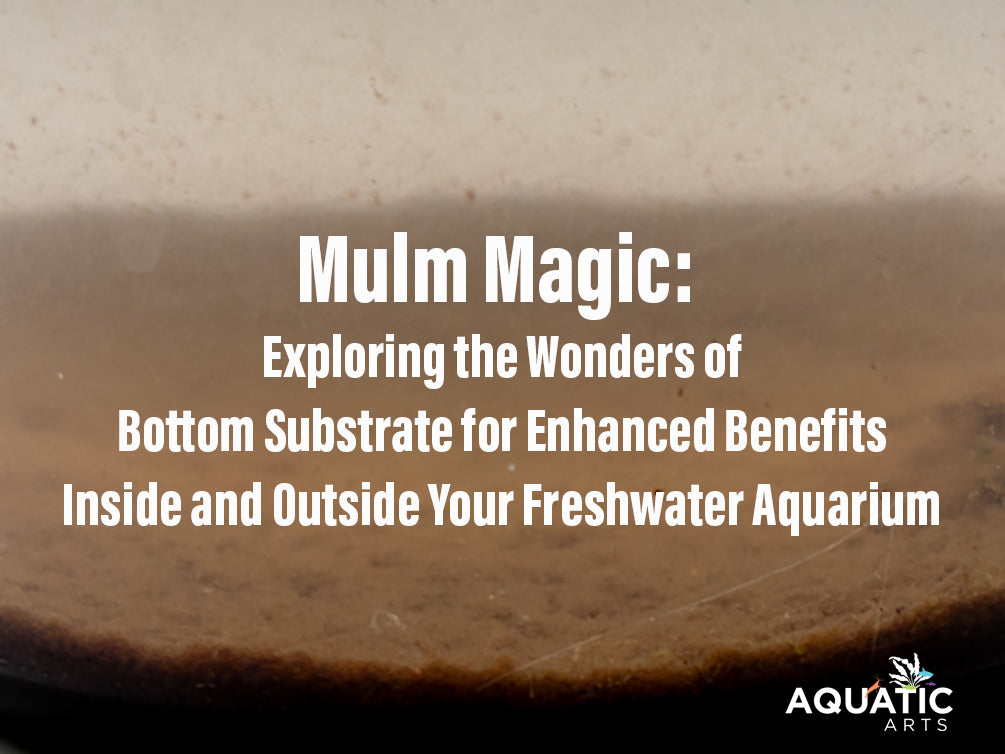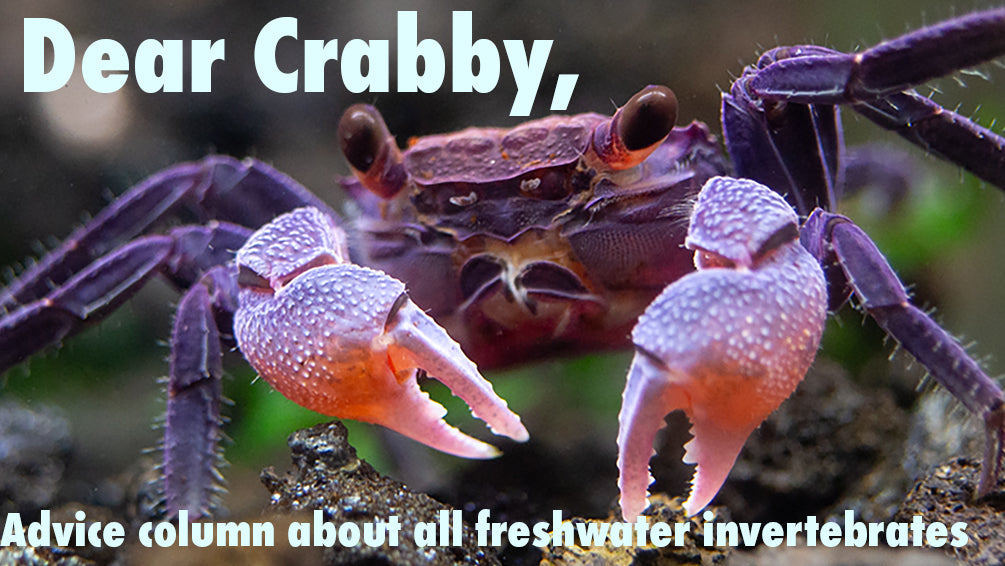Mulm Magic: Exploring the Wonders of Bottom Substrate for Enhanced Benefits Inside and Outside Your Freshwater Aquarium

Mulm Magic: Unveiling the Wonders of Bottom Substrate in Your Freshwater Aquarium
Welcome to the enchanting world of freshwater aquariums, where every element plays a vital role in creating a thriving ecosystem. Among the unsung heroes of aquarium maintenance is a humble yet magical component called "mulm." In this article, we'll explore the wonders of mulm and how it can transform your aquatic haven into a flourishing underwater paradise.
2

Optimizing Aquarium Health: Mulm Accumulation on Substrate, Ready for Effortless Removal with an Aquarium Vacuum or siphon hose.
2
What is Mulm?
Mulm, often overlooked by novice aquarists, refers to the layer of organic debris that accumulates in the substrate at the bottom of your aquarium. This mixture of uneaten fish food, plant matter, and other organic materials forms a natural layer that holds incredible benefits for the overall health and balance of your freshwater tank.
3
The Mulm Magic Unveiled:
Nutrient Recycling: Mulm acts as a natural fertilizer for your aquatic plants, supplying them with essential nutrients. As fish waste and leftover food break down in the substrate, they release valuable compounds like nitrogen, phosphorus, and potassium, promoting lush plant growth and a vibrant aquatic landscape.
Biological Filtration: Beneath the surface, beneficial bacteria thrive in the mulm layer. These bacteria play a crucial role in biological filtration, breaking down harmful ammonia into less toxic substances. By maintaining a healthy mulm layer, you support the growth of these beneficial microorganisms, ensuring a stable and safe environment for your fish.
A Hiding Haven: Mulm provides a natural refuge for small invertebrates, such as snails and microorganisms. These tiny creatures contribute to the overall biodiversity of your aquarium, creating a balanced ecosystem and enhancing the natural dynamics of aquatic life.
3

Exploring the Depths: Smudge Violet Corydoras, Bottom Dwellers and Scavengers, Utilize Mulm as Shelter and a Buffet for Micro Fauna and Leftover Delights
2
Water Clarity and Stability: While it may seem counterintuitive, a well-maintained mulm layer can contribute to water clarity. By preventing debris from circulating in the water column, mulm helps maintain stable water conditions, reducing the risk of sudden spikes in nutrient levels and promoting a clear and pristine aquatic environment.
2
How to Harness Mulm Magic:
Gentle Substrate Maintenance: Avoid aggressive cleaning of the substrate during routine aquarium maintenance. Instead, use a gentle gravel vacuum to remove excess debris without disturbing the beneficial mulm layer.
Balanced Feeding: Be mindful of the amount of food you provide to your fish. Overfeeding can lead to an excessive buildup of organic matter in the substrate, potentially causing water quality issues.
Natural Aquascaping: Embrace a natural aquascape by incorporating live plants and allowing them to shed leaves. This organic matter contributes to the mulm layer, enhancing the overall health and beauty of your aquarium.
3
Mulm Marvels: Unleashing the Power of Aquarium Waste Beyond the Tank
While the primary benefits of mulm are observed within the confines of a fish tank, some elements of its positive impact can be harnessed outside the aquarium setting. Here are a few creative ways to utilize the benefits of mulm beyond your fish tank.
3
1. Garden Fertilizer:
- Consider incorporating mulm into your gardening routine. The nutrient-rich organic matter in mulm can serve as an excellent natural fertilizer for your garden soil. Gently mix the mulm into the top layer of the soil to provide essential nutrients to your plants.
2. Composting Material:
- Use mulm as a valuable addition to your compost bin. Its organic content, derived from fish waste and decomposed matter, can enhance the nutrient profile of your compost. Mix it with other compostable materials to create nutrient-rich soil for your garden.
3. Indoor Plant Care:
- If you have indoor plants, consider incorporating a small amount of mulm into their soil. This can mimic the natural environment of plants, providing a slow-release source of nutrients. Be cautious with the amount, as indoor plants may not require as much as their outdoor counterparts.

Green Elegance: Household and Terrarium Favorites like Pothos Thrive with a Touch of Mulm, Unleashing a Wealth of Nutrients for Lush Growth
3
4. Soil Amendment in Potted Plants:
- When repotting or refreshing the soil in your potted plants, mix in a bit of mulm. This can help improve the soil structure and fertility, contributing to healthier and more robust plants.
5. Worm Bin Boost:
- If you maintain a vermicomposting system with worms, introduce a small amount of mulm to their environment. The organic material in mulm can serve as a supplementary food source for the worms, enriching their castings and, consequently, enhancing the quality of your vermicompost.
6. Aquaponics Nutrient Source:
- If you have an aquaponics system, where fish waste is used to fertilize plants, consider extracting mulm from your aquarium. Introduce this nutrient-rich material into the aquaponic system to enhance the overall nutrient content for your plants.
7. Enhance Soil Microbial Activity:
- Mulm contains beneficial bacteria that play a role in breaking down organic matter. When incorporated into garden soil, it can contribute to the development of a healthy microbial community, promoting soil health and plant growth.
Cautionary Notes:
- Moderation is Key: While mulm can be beneficial, use it in moderation, especially in non-aquatic settings. Excessive amounts may lead to an imbalance in nutrients.
- Avoid Chemical Contamination: Ensure that the mulm is free from any chemicals or medications that could be harmful to plants or the environment.
In conclusion, mulm emerges as the hidden treasure of freshwater aquariums, adding a hint of enchantment to the underwater realm you've carefully crafted. By grasping and appreciating the perks of this natural substrate layer, you hold the key to fostering a balanced and flourishing aquatic haven for your fish and plants. So, let mulm perform its magic, allowing your aquarium to burst with life and showcase the mesmerizing beauty of a well-balanced ecosystem. Furthermore, by creatively repurposing the benefits of mulm, you can expand its positive influence beyond the aquarium, contributing to a more eco-friendly and nutrient-rich environment for your plants and gardens. Embrace the charm of mulm and watch both your aquatic and terrestrial landscapes thrive harmoniously.




